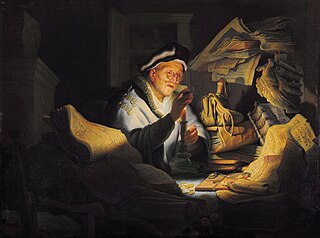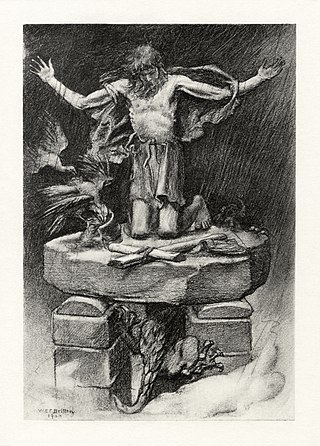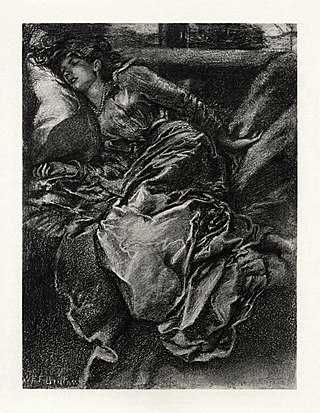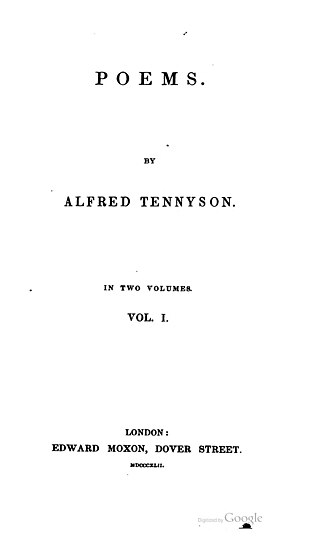
Alfred Tennyson, 1st Baron Tennyson was an English poet. He was the Poet Laureate during much of Queen Victoria's reign. In 1829, Tennyson was awarded the Chancellor's Gold Medal at Cambridge for one of his first pieces, "Timbuktu". He published his first solo collection of poems, Poems, Chiefly Lyrical, in 1830. "Claribel" and "Mariana", which remain some of Tennyson's most celebrated poems, were included in this volume. Although described by some critics as overly sentimental, his verse soon proved popular and brought Tennyson to the attention of well-known writers of the day, including Samuel Taylor Coleridge. Tennyson's early poetry, with its medievalism and powerful visual imagery, was a major influence on the Pre-Raphaelite Brotherhood.

Emily Sarah Tennyson, Baroness Tennyson, known as Emily, Lady Tennyson, was the wife of the poet Alfred, Lord Tennyson, and a creative talent in her own right. Emily was the oldest of three daughters, raised by a single father, after her mother Sarah died when she was three years old. Her father, a successful lawyer, was devoted to her and her sisters and ensured that they had a good education. She met Alfred when she was a girl, but they did not develop a romantic relationship until his brother Charles married her sister Louisa. It was thirteen years before they would marry, due to her father's concerns about the degree to which Tennyson could provide for her on a poet's salary. When his career became more successful, Emily and Alfred married.

The Serenade for Tenor, Horn and Strings, Op. 31, is a song cycle written in 1943 by Benjamin Britten for tenor, solo horn and a string orchestra. Composed during the Second World War at the request of the horn player Dennis Brain, it is a setting of a selection of six poems by English poets on the subject of night, including both its calm and its sinister aspects. The poets Britten chose to set for the Serenade range from an anonymous 15th-century writer to poets from the 17th, 18th and 19th centuries.

The poem "In Memoriam A.H.H." (1850) by Alfred, Lord Tennyson, is an elegy for his Cambridge friend Arthur Henry Hallam, who died of cerebral haemorrhage at the age of twenty-two years, in Vienna in 1833. As a sustained exercise in tetrametric lyrical verse, Tennyson's poetical reflections extend beyond the meaning of the death of Hallam, thus, “In Memoriam” also explores the random cruelty of Nature seen from the conflicting perspectives of materialist science and declining Christian faith in the Victorian Era (1837–1901), the poem thus is an elegy, a requiem, and a dirge for a friend, a time, and a place.

A Hindu wedding, also known as Vivaha, Lagna (लग्न), Kalyanam or Pelli is the traditional wedding ceremony for Hindus. The wedding ceremonies are very colourful, and celebrations may extend for several days. The bride's and groom's home—entrance, doors, wall, floor, roof—are sometimes decorated with colors, flowers, and other decorations.
Saint Agnes of Rome (291–304) is a virgin martyr, a patron saint of chastity, feasted on 21 January.

A Christian child's prayer is Christian prayer recited primarily by children that is typically short, rhyming, or has a memorable tune. It is usually said before bedtime, to give thanks for a meal, or as a nursery rhyme. Many of these prayers are either quotes from the Bible, or set traditional texts.

The Parable of the Rich Fool is a parable of Jesus which appears in The Gospel of Luke. It depicts the futility of the belief that wealth can secure prosperity or a good life.

"Locksley Hall" is a poem written by Alfred Tennyson in 1835 and published in his 1842 collection of Poems. It narrates the emotions of a rejected suitor upon coming to his childhood home, an apparently fictional Locksley Hall, though in fact Tennyson was a guest of the Arundel family in their stately home named Loxley Hall, in Staffordshire, where he spent much of his time writing whilst on his visits.

The bride of Christ or the lamb's wife is a term used in reference to a group of related verses in the Bible, in the Gospels, Revelation, the Epistles and related verses in the Old Testament. Sometimes, the bride is implied by calling Jesus a bridegroom. For over 1500 years, the Church was identified as the bride betrothed to Christ. However, there are instances of the interpretation of the usage varying from church to church. Most believe that it always refers to the church.

Manfred on the Jungfrau is an 1842 oil-on-canvas painting by Ford Madox Brown. It is inspired by Act I Scene II of Lord Byron's dramatic poem Manfred, probably most particularly the following:
... And you, ye crags upon whose extreme edge
I stand, and on the torrent's brink beneath
Behold the tall pines dwindled as to shrubs
In dizziness of distance, when a leap,
A stir, a motion, even a breath, would bring
My breast upon its rocky bosom's bed
To rest for ever – wherefore do I pause?
... Thou winged and cloud-cleaving minister,
Whose happy flight is highest into heaven,
Well may'st thou swoop so near me ...
... How beautiful is all this visible world!
How glorious in its action and itself!
"Now Sleeps the Crimson Petal" is a poem written by Alfred Tennyson. It is like a sonnet in having fourteen iambic lines, but it is not rhymed, and it does not follow either the Shakespearean or Petrarchan organization. It was first published in 1847, in The Princess: A Medley.

"St Simeon Stylites" is a poem written by Alfred Tennyson in 1833 and published in his 1842 collection of poetry. The poem describes the actions of St. Simeon Stylites, a Christian ascetic saint who recounts his various physical acts in hopes that he has earned his place in heaven. It captures Tennyson's feelings following the death of a close friend, Arthur Hallam, and contains feelings of self-loathing and regret. The work has ironic overtones that give it the appearance of a satirical work.

"The Day-Dream" is a poem written by Alfred Tennyson that was published in 1842. It was an expanded version of his 1830 poem "The Sleeping Beauty". It was further altered in 1848 for a dramatic performance for a private gathering with Tennyson starring as the Prince. "The Day-Dream" discusses the nature of sleeping and of dreaming, especially in relation to individuals that would want to escape from reality. The poem also compares the act of poetry with dreaming and asserts that the two are the same.

"Sir Galahad" is a poem written by Alfred Tennyson, 1st Baron Tennyson, and published in his 1842 collection of poetry. It is one of his many poems that deal with the legend of King Arthur, and describes Galahad experiencing a vision of the Holy Grail. The subject of the poem was later included in "The Holy Grail" section of Tennyson's Idylls of the King, but the latter version depicts Galahad as a pious individual who is grimly determined to fulfill his destiny. Sir Galahad, in contrast, depicts Galahad as proud, and has almost cheerful undertones.

"Break, Break, Break" is a poem by Alfred, Lord Tennyson written during early 1835 and published in 1842. The poem is an elegy that describes Tennyson's feelings of loss after Arthur Henry Hallam died and his feelings of isolation while at Mablethorpe, Lincolnshire.

Poems, by Alfred Tennyson, was a two-volume 1842 collection in which new poems and reworked older ones were printed in separate volumes. It includes some of Tennyson's finest and best-loved poems, such as Mariana, The Lady of Shalott, The Palace of Art, The Lotos Eaters, Ulysses, Locksley Hall, The Two Voices, Sir Galahad, and Break, Break, Break. It helped to establish his reputation as one of the greatest poets of his time.

The Miller's Daughter is a narrative poem by Alfred Tennyson, first printed in 1833 and significantly revised in 1842.
Poems, Chiefly Lyrical is a poetry collection by Alfred Tennyson, published in June 1830.


















